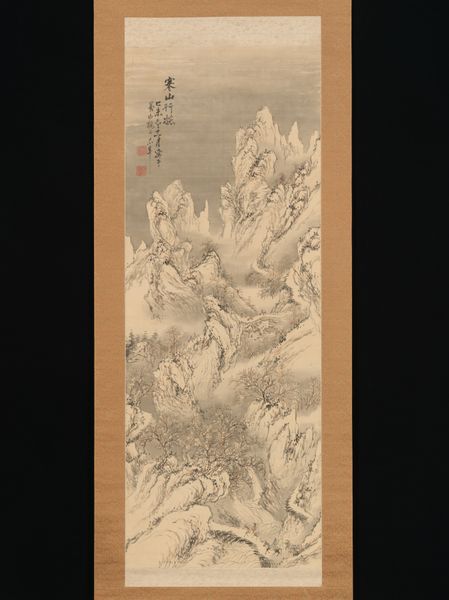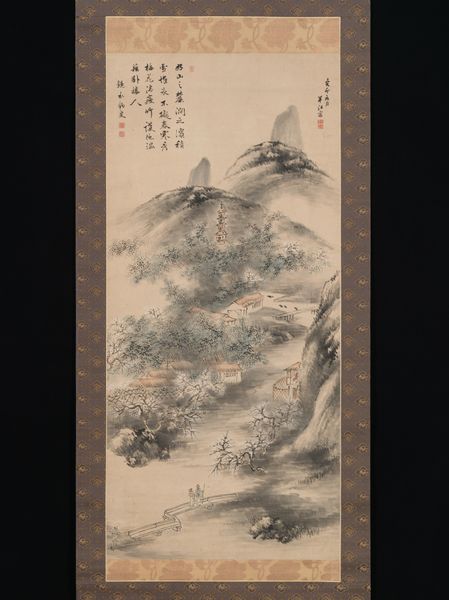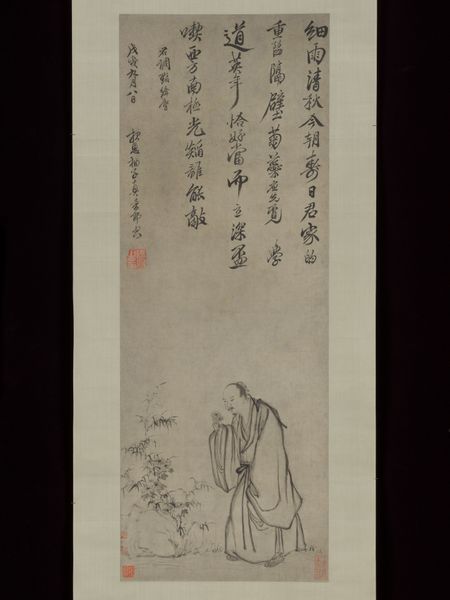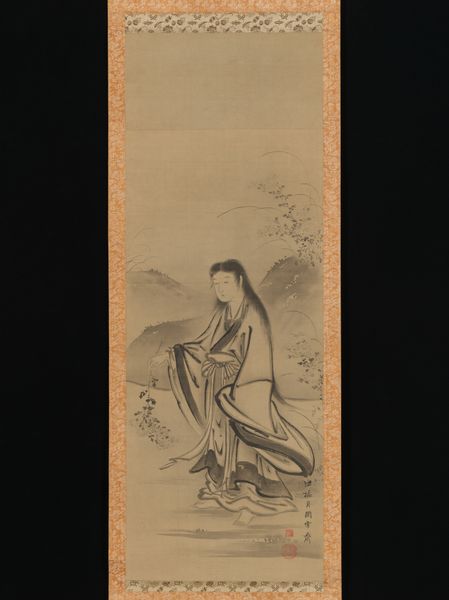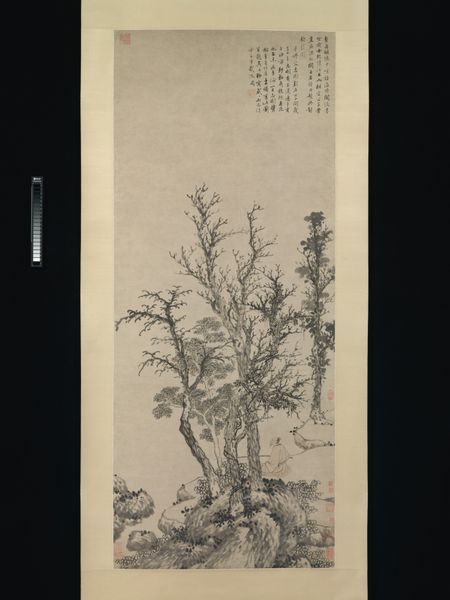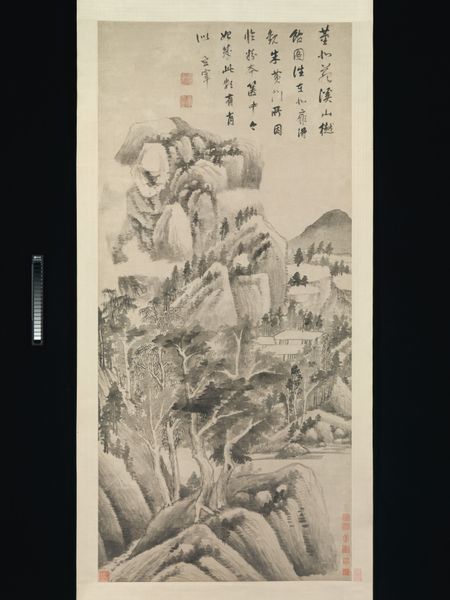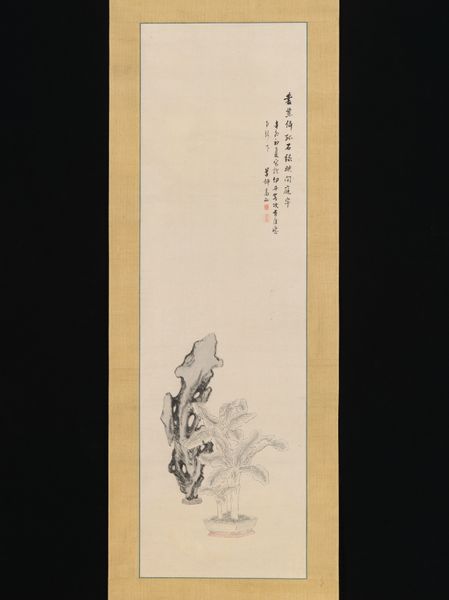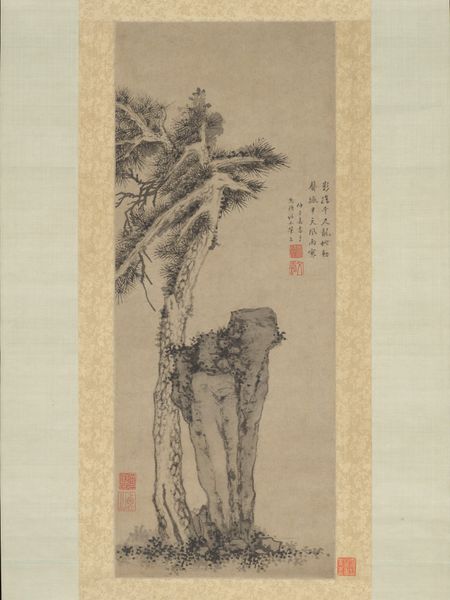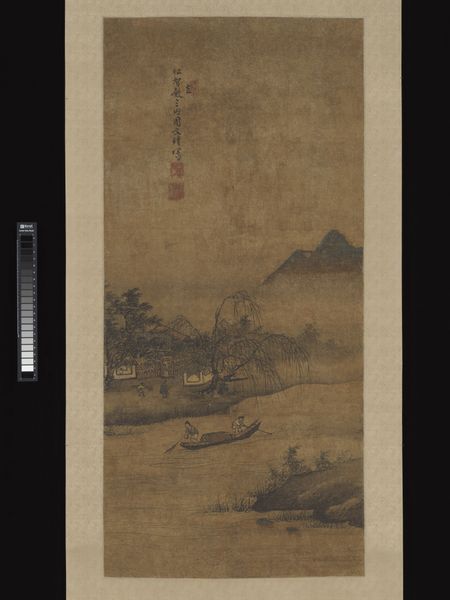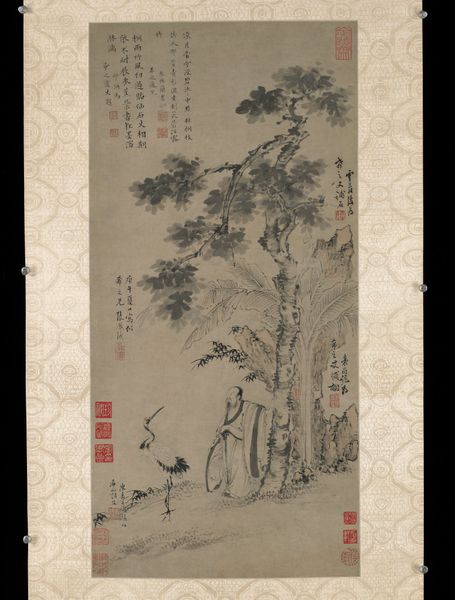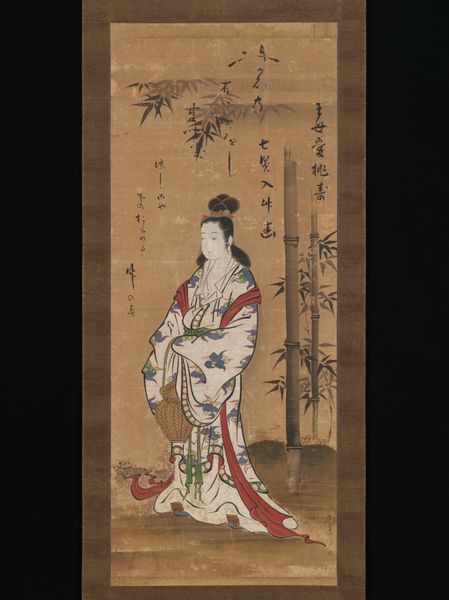
Dimensions: Image: 55 × 19 5/8 in. (139.7 × 49.8 cm) Overall with mounting: 83 7/8 × 26 in. (213 × 66 cm) Overall with knobs: 83 7/8 × 28 1/2 in. (213 × 72.4 cm)
Copyright: Public Domain
Amano Hōko painted this hanging scroll, "Kannon in a Bamboo Grove," in ink on silk sometime in the late 19th century. It depicts Kannon, the bodhisattva of compassion, seated serenely amidst a grove of bamboo. Paintings like this served not only as objects of devotion but also as cultural statements. The choice of subject matter, the style of painting, and even the materials used, all reflected the artist's social standing and the cultural values of the time. The bamboo, for instance, is a symbol of resilience and integrity in Japanese culture, qualities often associated with the samurai class, which was undergoing significant changes during the Meiji Restoration. To truly understand this painting, we might delve into the artist's biography, the art academies they attended, and the patronage networks they relied upon. We can also research the changing religious landscape of Meiji-era Japan, a time when Buddhism was both challenged and reshaped by encounters with the West and the rise of nationalism. Only then can we begin to appreciate the complex social and cultural forces that shaped its creation.
Comments
No comments
Be the first to comment and join the conversation on the ultimate creative platform.
